CENTRAL AMERICA: TREKKING CLOUD FORESTS AND CANYONS
By David DanneckerSenior EditorThis is the third article in our 2015 Week of Photo Journals: Changing Perspectives. Check back each day this week to see more beautiful photography and travel accounts from UC San Diego students. Click on the images in the article to view the photos up close.In my third year as an undergrad, I had the amazing experience of studying abroad in Costa Rica. I spent two and a half months living in Costa Rica, followed up by a month of exploring Nicaragua and Belize. The nations of Central America host a range of stunning environments, from crystalline coastlines and boggy mangrove forests, to humid lowland forests and river valleys, to otherworldly cloud forests threaded through the many mountain ranges. Amid all of these beautiful ecosystems, Central America also hosts a mind-boggling amount of native biodiversity, much like their Amazonian neighbors. Costa Rica alone has five percent of the world's biodiversity, including thousands of species of insects and plants, and hundreds of species of birds, mammals and reptiles.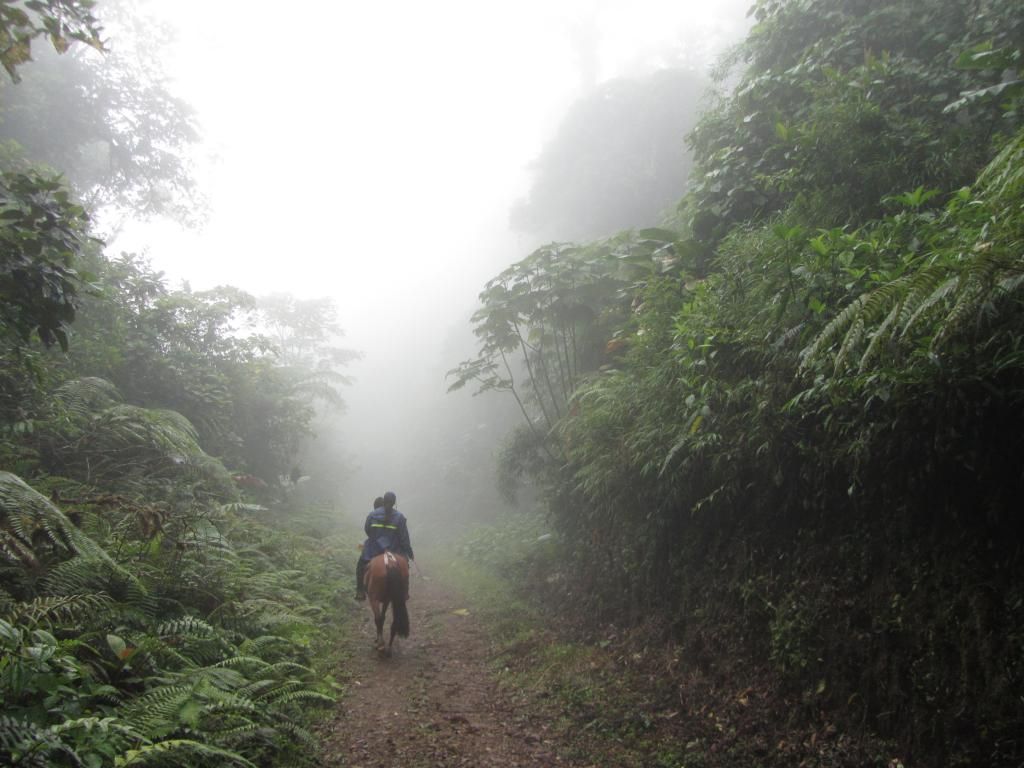 In Costa Rica, I had the chance to venture into the Monteverde Cloud Forests on horseback. Cloud forests are tropical forests that tend to occur at higher elevations around the world. Besides Central America, cloud forests can also be found in the mountains of South America, the highlands of tropical Africa, and the islands of Southeast Asia and the Caribbean. As you can see in the photo above, these forests are aptly named for the ever-present cloud banks which permeate the forest canopy. In fact, some of the cloud forest's native plant species have adapted to utilize the moisture held in the mist, absorbing water from the so-called 'horizontal precipitation' in order to better withstand the tropical dry season.
In Costa Rica, I had the chance to venture into the Monteverde Cloud Forests on horseback. Cloud forests are tropical forests that tend to occur at higher elevations around the world. Besides Central America, cloud forests can also be found in the mountains of South America, the highlands of tropical Africa, and the islands of Southeast Asia and the Caribbean. As you can see in the photo above, these forests are aptly named for the ever-present cloud banks which permeate the forest canopy. In fact, some of the cloud forest's native plant species have adapted to utilize the moisture held in the mist, absorbing water from the so-called 'horizontal precipitation' in order to better withstand the tropical dry season.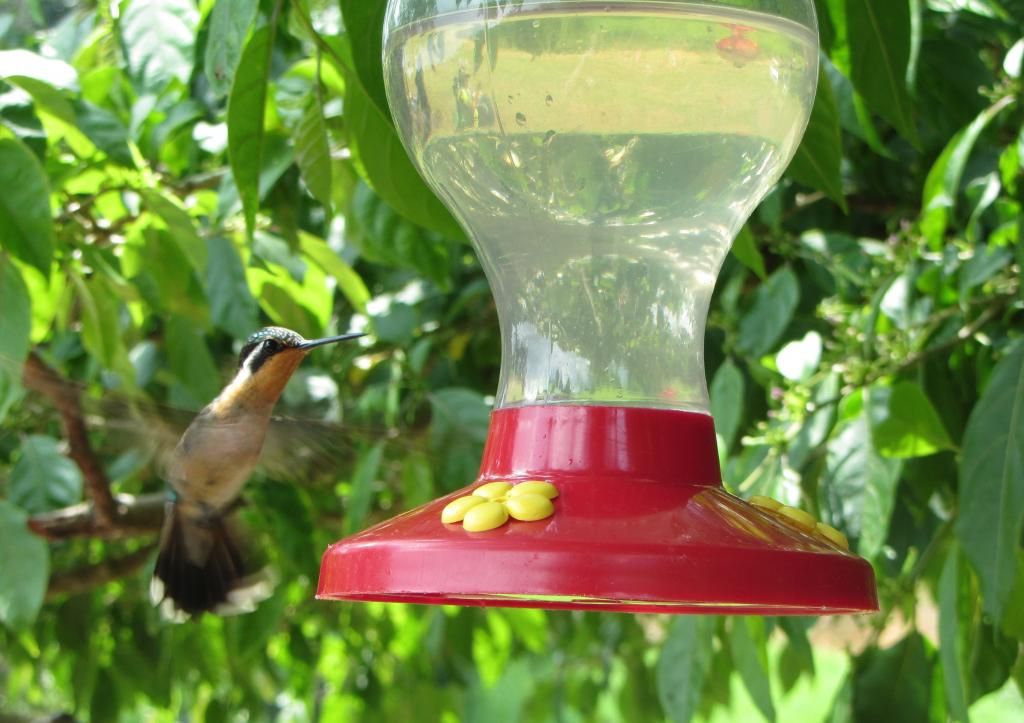
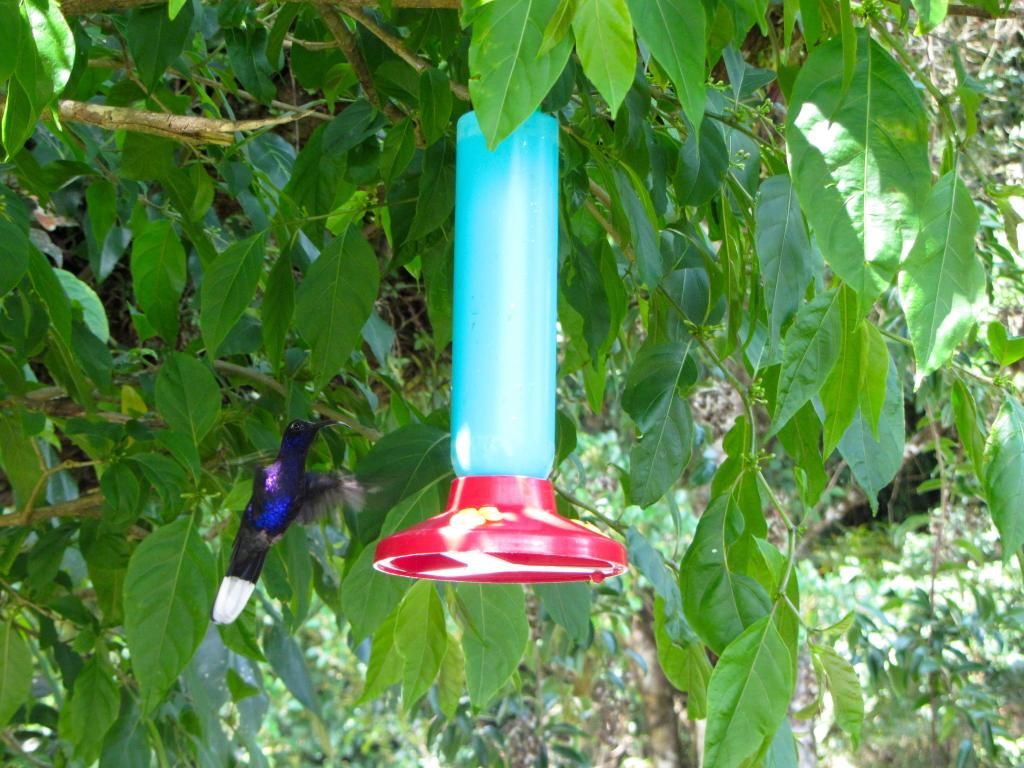 Monteverde is known for its access to one of Costa Rica's best-preserved cloud forests, and the incredible diversity of birds and insects that call it home. Particularly notable are the hummingbirds - 14 different species of brightly-colored and energetic hummingbirds can be found in the town of Monteverde alone. Compare that to the 54 species found in Costa Rica as a whole, and it's clear why Monteverde is a prime destination for tropical birders. The photos show two of the 14 species that can be found in Monteverde, tending to artificial feeders at a local butterfly garden: a female Purple-throated Mountain-gem (Lampornis calolaemus) [top] and a male Violet Sabrewing (Campylopterus hemileucurus) [bottom].
Monteverde is known for its access to one of Costa Rica's best-preserved cloud forests, and the incredible diversity of birds and insects that call it home. Particularly notable are the hummingbirds - 14 different species of brightly-colored and energetic hummingbirds can be found in the town of Monteverde alone. Compare that to the 54 species found in Costa Rica as a whole, and it's clear why Monteverde is a prime destination for tropical birders. The photos show two of the 14 species that can be found in Monteverde, tending to artificial feeders at a local butterfly garden: a female Purple-throated Mountain-gem (Lampornis calolaemus) [top] and a male Violet Sabrewing (Campylopterus hemileucurus) [bottom].
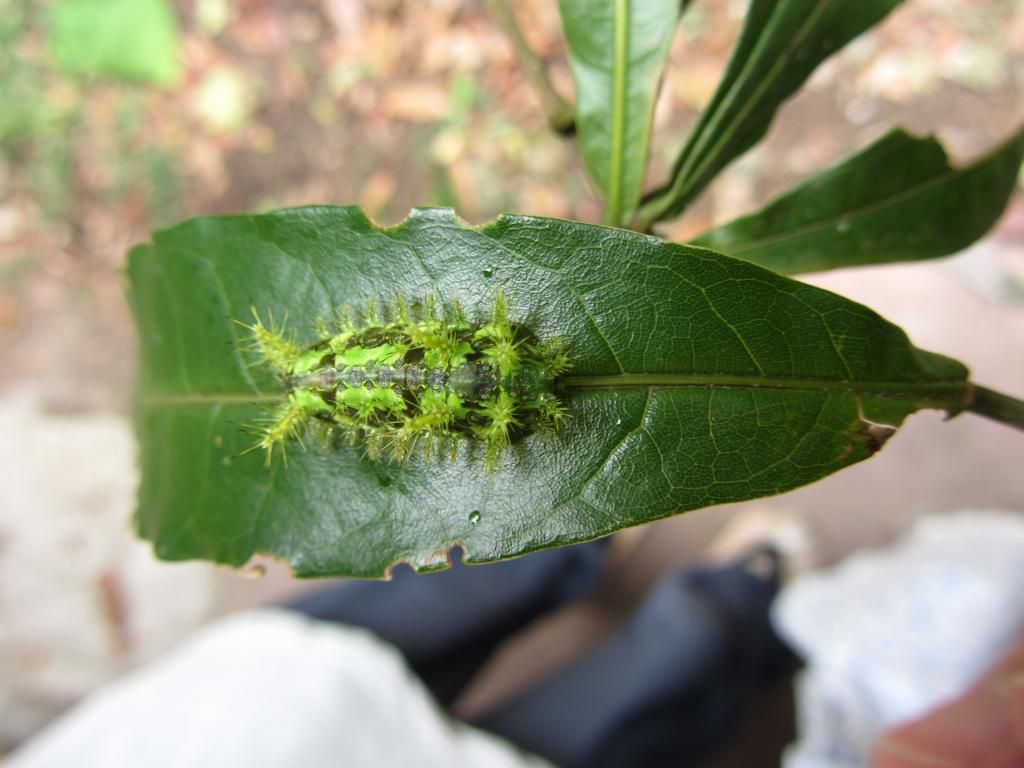
 The size of Costa Rica's insect community is staggering. You can hardly walk through the rain forest without encountering a species of insect that you haven't seen before. The sizes range from walking sticks several inches long and moths the size of a human hand, down to plentiful minuscule species that you'd scarcely notice. Costa Rica has over 300,000 species of insects, comprising the vast majority of the species that have been described in the country. Pictured are an orange and black species of planthopper (Auchenorrhyncha) [top], a well-defended caterpillar [middle], and a sizable Lepidopteran showcasing prominent eyespots for defense as it rests on the underside of a fern [bottom].
The size of Costa Rica's insect community is staggering. You can hardly walk through the rain forest without encountering a species of insect that you haven't seen before. The sizes range from walking sticks several inches long and moths the size of a human hand, down to plentiful minuscule species that you'd scarcely notice. Costa Rica has over 300,000 species of insects, comprising the vast majority of the species that have been described in the country. Pictured are an orange and black species of planthopper (Auchenorrhyncha) [top], a well-defended caterpillar [middle], and a sizable Lepidopteran showcasing prominent eyespots for defense as it rests on the underside of a fern [bottom].
 Snakes are another category of species that are especially diverse in Costa Rica. Over 160 species of snakes can be found in the country, and 22 of them are venomous. Pictured here are two of the more venomous species: the Fer-de-lance (Bothrops asper) [top] and the Eyelash Viper (Bothriechis schlegelii) [bottom]. Fer-de-lances are generally considered the most dangerous of Costa Rica's venomous snakes, and bites can often be critical, especially if you are not near an emergency medical center or hospital. The arboreal eyelash vipers are also quite venomous, but are smaller, and less prone to biting humans unless directly provoked or disturbed. Eyelash vipers also occur in a broad range of color variations, from mossy camouflaged patterns like this one, to bright yellows, greens and blues.
Snakes are another category of species that are especially diverse in Costa Rica. Over 160 species of snakes can be found in the country, and 22 of them are venomous. Pictured here are two of the more venomous species: the Fer-de-lance (Bothrops asper) [top] and the Eyelash Viper (Bothriechis schlegelii) [bottom]. Fer-de-lances are generally considered the most dangerous of Costa Rica's venomous snakes, and bites can often be critical, especially if you are not near an emergency medical center or hospital. The arboreal eyelash vipers are also quite venomous, but are smaller, and less prone to biting humans unless directly provoked or disturbed. Eyelash vipers also occur in a broad range of color variations, from mossy camouflaged patterns like this one, to bright yellows, greens and blues.
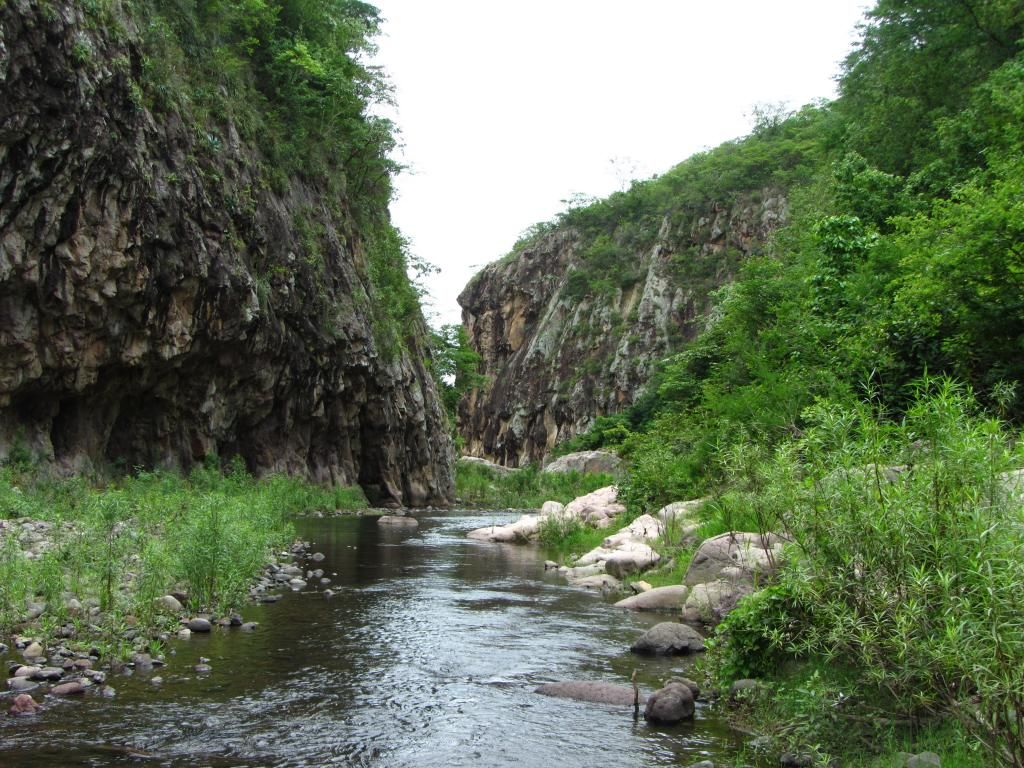
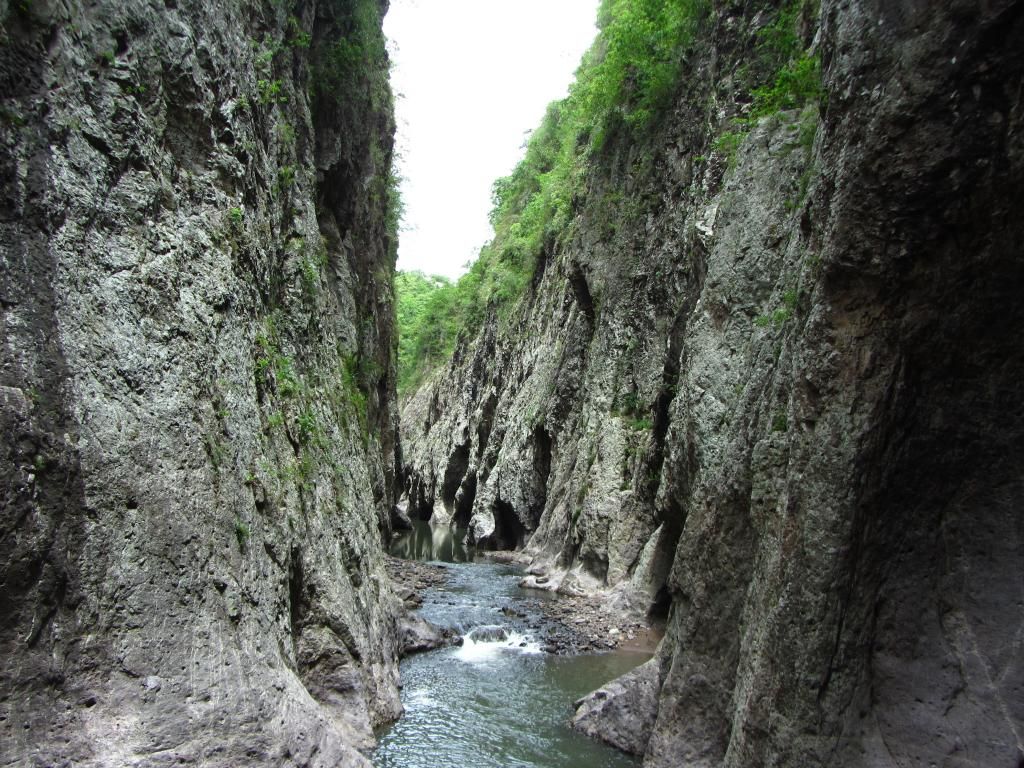 After my study program ended, I spent a couple of weeks exploring Nicaragua, devoting much of that time to the mountainous northern region. Nicaragua has quite a few amazing natural sites to offer, especially if you are willing to venture slightly off the beaten path. Near the small town of Somoto, guides are available to lead you on a tour of Somoto Canyon, which is an incredible geologic feature that was actually fairly unexplored until just over 10 years ago. The steep walls rise up on either side of the often narrow canyon as you hike, swim and float your way from one end to the other. It makes for some spectacular views.
After my study program ended, I spent a couple of weeks exploring Nicaragua, devoting much of that time to the mountainous northern region. Nicaragua has quite a few amazing natural sites to offer, especially if you are willing to venture slightly off the beaten path. Near the small town of Somoto, guides are available to lead you on a tour of Somoto Canyon, which is an incredible geologic feature that was actually fairly unexplored until just over 10 years ago. The steep walls rise up on either side of the often narrow canyon as you hike, swim and float your way from one end to the other. It makes for some spectacular views.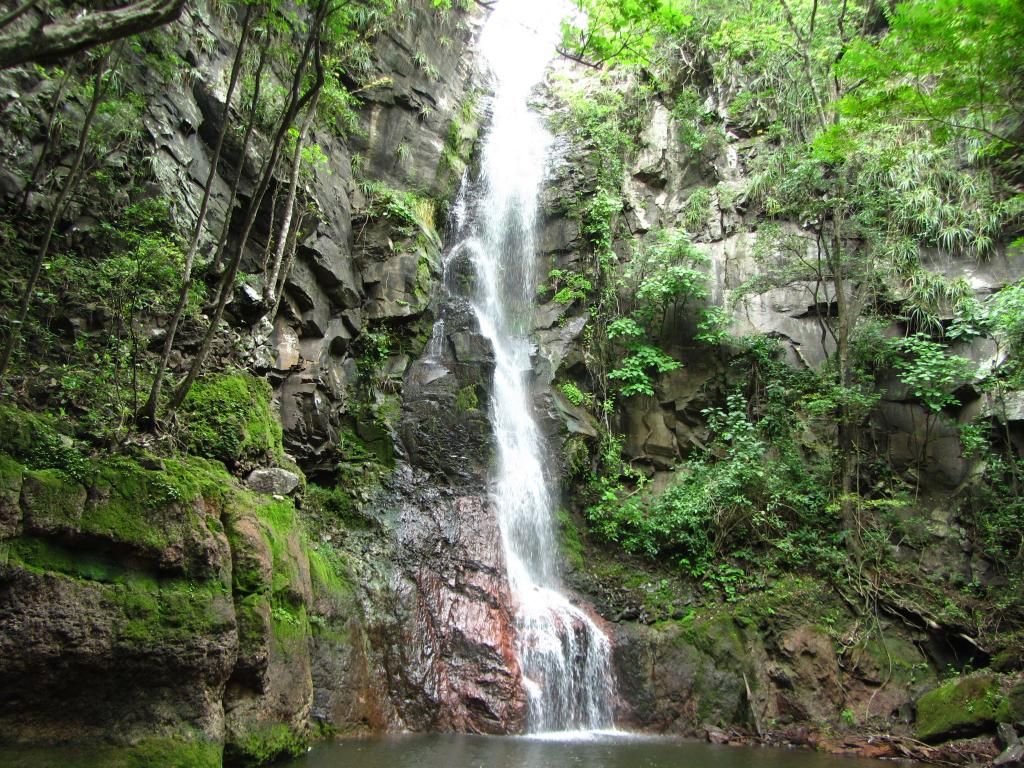
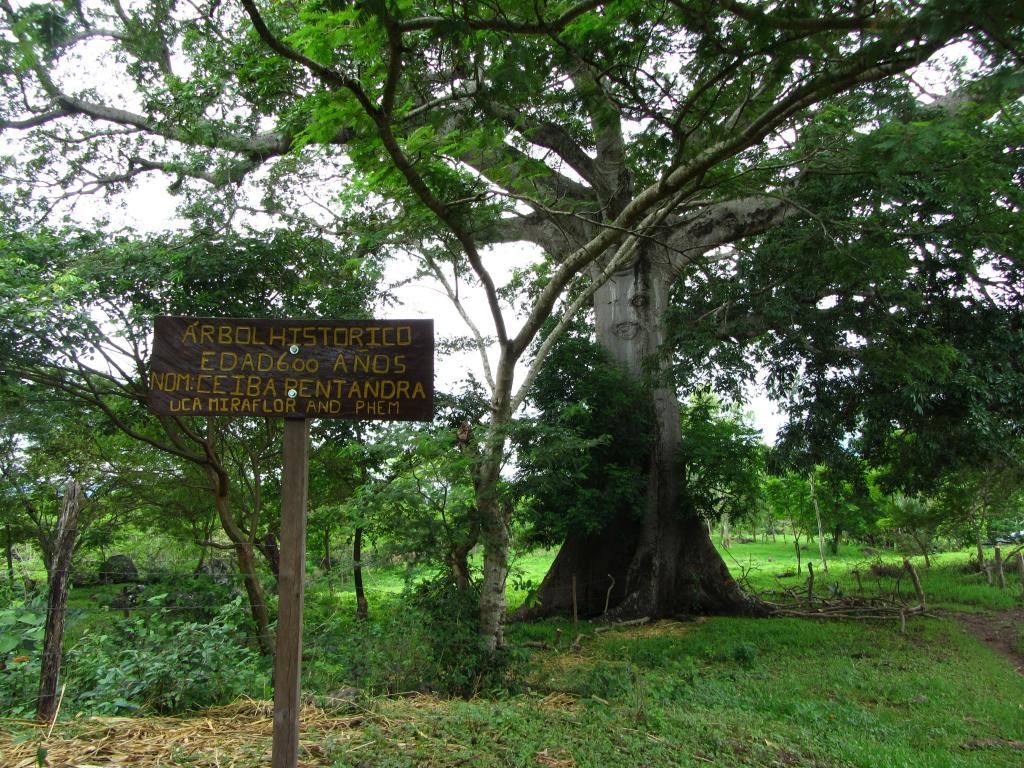 Another attraction well worth a look in Nicaragua is the Miraflor Natural Reserve. Home to plenty of biodiversity, engaging hiking trails, friendly guides, and picturesque waterfalls, Miraflor is really an unmissable diversion if you find yourself in the city of Estelí. One truly unique sight in the reserve was a 600-year-old tree (Ceiba pentandra) that stands between two open fields. At that age, the tree has been standing since before Europeans ever visited Nicaragua.
Another attraction well worth a look in Nicaragua is the Miraflor Natural Reserve. Home to plenty of biodiversity, engaging hiking trails, friendly guides, and picturesque waterfalls, Miraflor is really an unmissable diversion if you find yourself in the city of Estelí. One truly unique sight in the reserve was a 600-year-old tree (Ceiba pentandra) that stands between two open fields. At that age, the tree has been standing since before Europeans ever visited Nicaragua.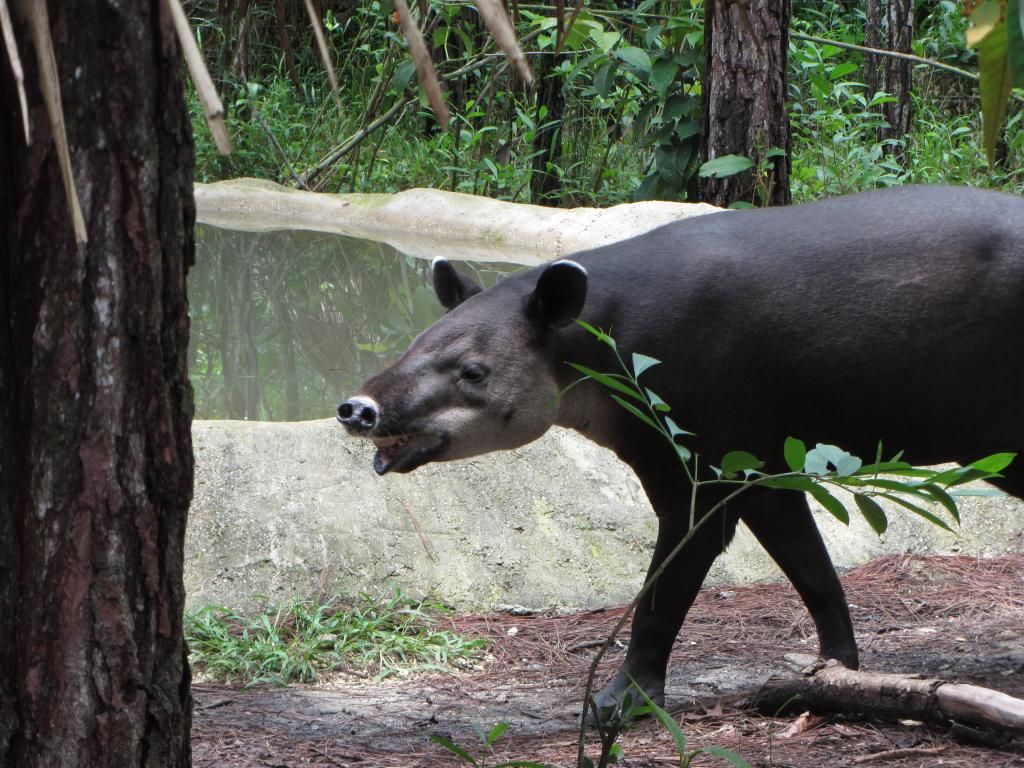
 After my time in Nicaragua, I flew northward to Belize for the final leg of my journey. Lying on the eastern coast of Central America, Belize had a far more Caribbean atmosphere, both in terms of environment and culture, than the largely Pacific areas of Nicaragua and Costa Rica I'd seen so far. Belize is sparsely populated, and so much of its natural land is untrammeled by human development. One of the easiest ways to witness some of Belize's most impressive native wildlife is to pay a visit to the Belize Zoo. Founded as a sanctuary for tame native species that had been filmed for a documentary in the 1980s, the Belize Zoo now houses an impressive collection of some of Central America's most iconic wildlife, including the Tapir (Tapirus bairdii), which is the national animal of Belize and the largest terrestrial animal in Central America, and the Jaguar (Panthera onca), the largest species of feline in the Western Hemisphere. While Belize has plenty of natural spaces where it is possible to view these species in situ, visiting the Belize Zoo is a nice way to guarantee a view of some of Belize's rarer species.
After my time in Nicaragua, I flew northward to Belize for the final leg of my journey. Lying on the eastern coast of Central America, Belize had a far more Caribbean atmosphere, both in terms of environment and culture, than the largely Pacific areas of Nicaragua and Costa Rica I'd seen so far. Belize is sparsely populated, and so much of its natural land is untrammeled by human development. One of the easiest ways to witness some of Belize's most impressive native wildlife is to pay a visit to the Belize Zoo. Founded as a sanctuary for tame native species that had been filmed for a documentary in the 1980s, the Belize Zoo now houses an impressive collection of some of Central America's most iconic wildlife, including the Tapir (Tapirus bairdii), which is the national animal of Belize and the largest terrestrial animal in Central America, and the Jaguar (Panthera onca), the largest species of feline in the Western Hemisphere. While Belize has plenty of natural spaces where it is possible to view these species in situ, visiting the Belize Zoo is a nice way to guarantee a view of some of Belize's rarer species.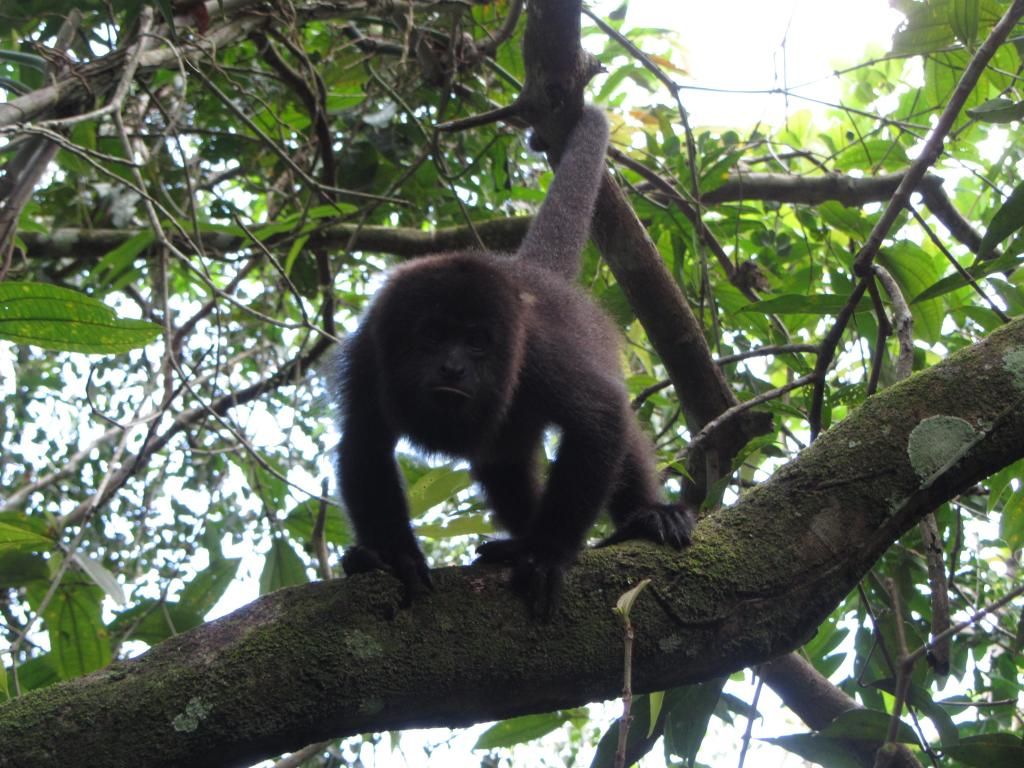 Central America is home to fewer than 10 species of monkey. That figure pales in comparison to the dozens of primate species that can be found in the Amazon rain forest. Nevertheless, monkeys in Central America play several crucial roles in the ecosystem, having spread out to fill different niches. Squirrel monkeys are omnivorous; spider monkeys are active, mobile herbivores; and capuchins are voracious generalists, eating insects and fruits, but even going so far as preying on lizards and birds. Howler monkeys [pictured] are much more lethargic and eat the most foliage of the various species. They spend the vast majority of their time sleeping.
Central America is home to fewer than 10 species of monkey. That figure pales in comparison to the dozens of primate species that can be found in the Amazon rain forest. Nevertheless, monkeys in Central America play several crucial roles in the ecosystem, having spread out to fill different niches. Squirrel monkeys are omnivorous; spider monkeys are active, mobile herbivores; and capuchins are voracious generalists, eating insects and fruits, but even going so far as preying on lizards and birds. Howler monkeys [pictured] are much more lethargic and eat the most foliage of the various species. They spend the vast majority of their time sleeping.
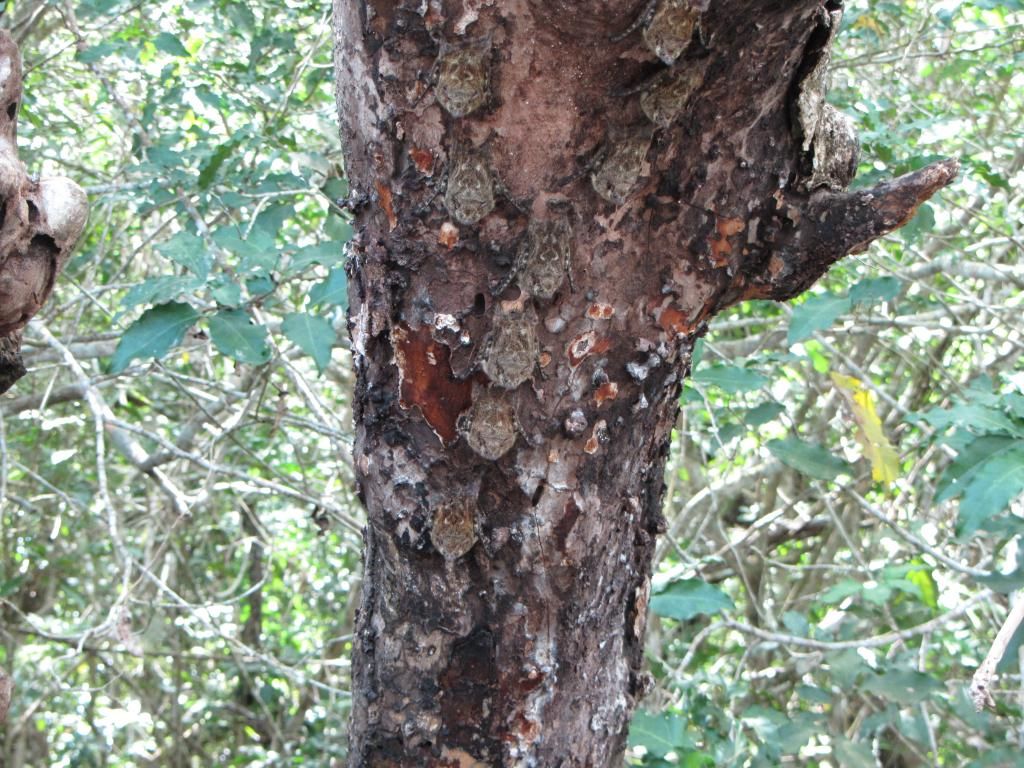 Bats comprise about one fifth to one quarter of all mammal species worldwide. In the tropics, the proportion is even greater. Bats make up over half of the mammal species in Costa Rica, and nearly 60 percent of mammal species in Belize. Bats perform many vital services, from pollinating flowers, to dispersing fruit seeds, to keeping the insect population under control. While many tropical bats are under threat from disease and habitat destruction, some bats have been able to find ways to coexist with human communities. Pictured [top] is a small colony of bats sleeping in the rafters of a visitor center in Bermudian Landing, Belize. The second picture shows a roost of well-hidden bats, camouflaging against the bark of a tree on the banks of a river in northern Belize.
Bats comprise about one fifth to one quarter of all mammal species worldwide. In the tropics, the proportion is even greater. Bats make up over half of the mammal species in Costa Rica, and nearly 60 percent of mammal species in Belize. Bats perform many vital services, from pollinating flowers, to dispersing fruit seeds, to keeping the insect population under control. While many tropical bats are under threat from disease and habitat destruction, some bats have been able to find ways to coexist with human communities. Pictured [top] is a small colony of bats sleeping in the rafters of a visitor center in Bermudian Landing, Belize. The second picture shows a roost of well-hidden bats, camouflaging against the bark of a tree on the banks of a river in northern Belize.
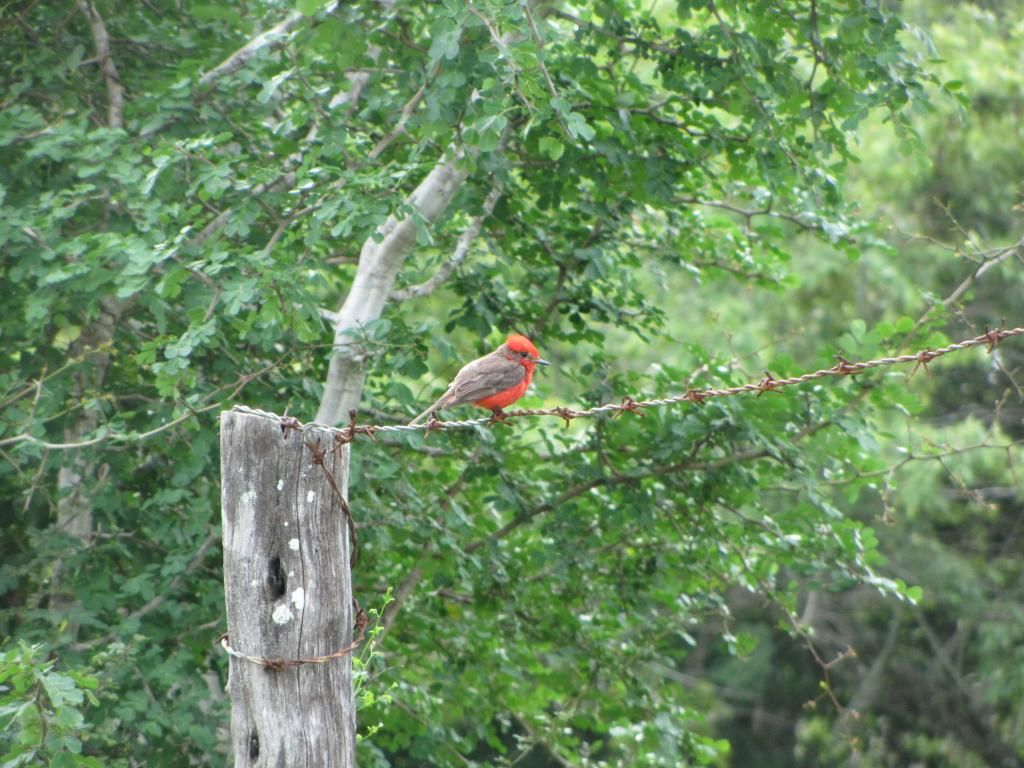 One of my final stops in Belize was the Crooked Tree Wildlife Sanctuary. This sanctuary sits on a lagoon and is best known as a birdwatching hotspot. I saw over 50 different species of birds on a two-hour boat tour, and it wasn't even peak season. Belize has a singularly impressive 543 species of birds, including perennial species and migrants. To put that diversity in perspective, Belize is slightly smaller than the State of Massachusetts, but Massachusetts is only home to roughly 200 species of birds. Pictured here are a striking Black-collared Hawk (Busarellus nigricollis) moments before taking flight, and an equally stunning Vermillion Flycatcher (Pyrocephalus rubinus) perched on a fence, both observed at the Crooked Tree Sanctuary.All images by David Dannecker, Prospect Senior Editor
One of my final stops in Belize was the Crooked Tree Wildlife Sanctuary. This sanctuary sits on a lagoon and is best known as a birdwatching hotspot. I saw over 50 different species of birds on a two-hour boat tour, and it wasn't even peak season. Belize has a singularly impressive 543 species of birds, including perennial species and migrants. To put that diversity in perspective, Belize is slightly smaller than the State of Massachusetts, but Massachusetts is only home to roughly 200 species of birds. Pictured here are a striking Black-collared Hawk (Busarellus nigricollis) moments before taking flight, and an equally stunning Vermillion Flycatcher (Pyrocephalus rubinus) perched on a fence, both observed at the Crooked Tree Sanctuary.All images by David Dannecker, Prospect Senior Editor
